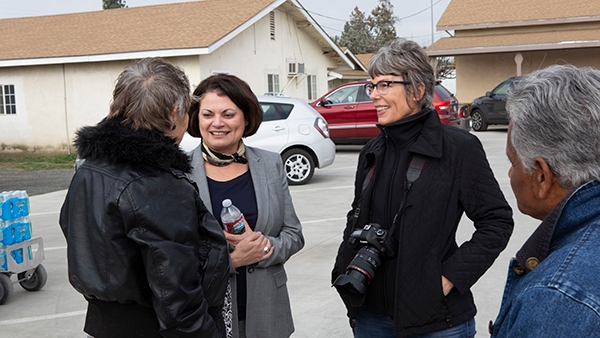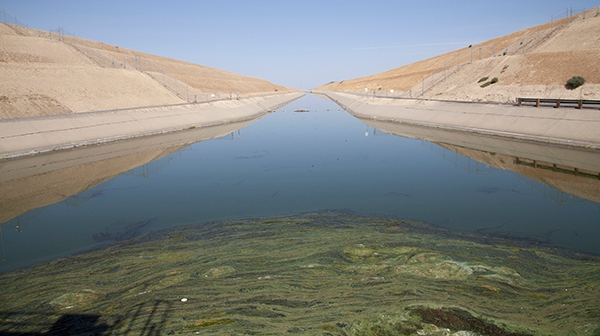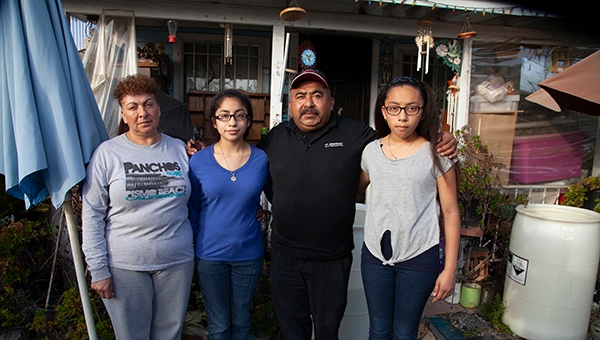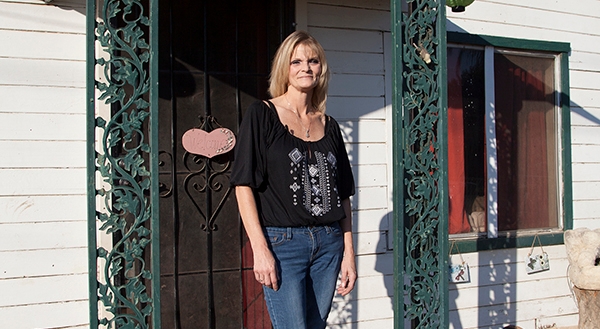Kristine Diekman is an artist, educator, and Professor of media at the California State University San Marcos School of Arts. Her digital media project, Run Dry, tells the story of the water crisis in California's San Joaquin Valley.
Could you provide an overview of the Run Dry project?
Run Dry is a story of small, rural California communities and their struggle to remain connected to the most precious resource—water. This digital media project combines short documentary films, personal stories, photographs, and data visualizations about water scarcity and contamination in the San Joaquin Valley. It asks, what does clean water bring us and why should we tell the story of its loss?
Without water, we cannot drink, bathe, cook, or clean. It is indispensable for empowerment, health, dignity, and economic security. Water is a human right, yet ten percent of the world's population, mostly in rural areas, lives without safe water. The personal stories in Run Dry investigate the significance of water and reveal the systems of power that govern its distribution. The project addresses how water is accessed, what systems govern water resources, how they have developed over decades, and how they impact human well-being today. Audiences learn specifically about how race, class, migration, water policy, climate, hydrology, and agricultural history combined to create the water crisis in the San Joaquin Valley.
What was your inspiration for the Run Dry project, and how did the project come to be?
I was inspired to connect people to a human understanding of the value of water and how scarce a resource it is. Run Dry was originally funded by the California Humanities Community Stories Grant, which supports projects that tell unheard stories of marginalized communities. In 2014 when the drought hit hard, I was compelled to collect the personal stories of people living without water, or with contaminated water, in the San Joaquin Valley. Media outlets had been focusing on these stories of hardship, and only a few sustained their reporting or connected water scarcity to larger issues. I wanted to make something comprehensive that also had community impact and empowered people living there.
I collaborated with the Community Water Center and Self-Help Enterprises in Visalia to identify individuals who wanted to share their stories. I also focused on success stories of communities connecting to neighboring water systems. I highlighted efforts to install water tanks to temporarily bring water into homes and the work of local water board members to improve community conditions. An animation I produced explaining groundwater contamination and scarcity is still being used by the Community Water Center.
This project spanned 2014-17. Since then, do you think the water shortage and contamination issues in the San Joaquin Valley have changed?
Since 2017, California has had some years with above-average rain and snowpack, but it is never completely free of drought. Climate change affects the snowpack, which previously provided reliable surface water that could be utilized over time. During 2011-15, little to no surface water was allocated to San Joaquin Valley farms from the State Water Project or the Central Valley Project.
Without surface water for irrigation, farmers pumped water from underground aquifers at greater and greater depths, some as deep at 2000 feet, which depleted shared groundwater. Private family wells that reach on average 100 to 200 feet began to run dry as the aquifer lowered below that of private domestic wells. Well drilling is very expensive and most rural residents could not afford to drill deeper wells. The State Groundwater Management Act (SGMA) was enacted to alleviate this through regional water regulation. But equitable solutions are still in the future as plans for water sustainability won't be fully implemented until 2040.
The project highlights how important it is to inform people about the personal impacts of water access. What do you hope people will take away from the stories in Run Dry?
When I show these videos to people, they are shocked. Viewers generally don't know a lot about the human impacts of water scarcity, even in their backyards. I found it sadly ironic that some scientists who viewed it – people that have the most in-depth information about water science, hydrology, climatology, and climate research – did not necessarily connect the importance of their work to the human condition. This is not their fault. The compartmentalization of knowledge and research, especially the divide between the arts, humanities, and the sciences leads to this disconnect. My hope is that the films help people feel personally connected to the issues through storytelling.
The public was also not aware of the threat of water scarcity due to drought. One of the messages is about water conservation, which everyone can do. Find out where your water comes from. Once you understand the complexities of water conveyance in California, you will be more likely to conserve what does reach your faucet. In the video This Happens to Real People, Mary Schaffer says, “Go to one of these areas that don't have no water and see how the people are having to live and what they are having to do to get by. You'll be more conscious with your water. Conserve that water, because we could run out. We are very close to being out again, and this time it will be everybody.” We need to work together as residents, policy makers, and scientists to make sure our water use is sustainable, not just now but into the future.
Watching these stories can lead to feeling a bit hopeless. How did gathering them impact you?
I have made several documentary and educational films that focus on telling the personal stories of struggle. These include films about gang prevention, pregnancy prevention, the legal system, and others. Each time I engage with an interview subject, I am deeply affected. My role as filmmaker is to facilitate the stories and be a witness. I provide time and space for someone to tell me about their life or community. As a filmmaker I often do not go into these projects with a deep knowledge of the subject. I let the experts and community members educate me.
With this project, I started to educate myself about water conveyance, water science, and water policy. It is truly a complex and unending story. I do think there is hope in mitigating water contamination. There are grassroots organizations, like the Community Water Center, that work tirelessly to facilitate community members speaking at hearings for policy change. They connect municipal systems, help to install water treatment facilities, and gather data to support their mission. Water sampling and monitoring is crucial, and the state is working towards compliance. As for drought and climate change, I believe that California will always have a tenuous relationship to water – either too much or too little. Do we spend on storage or environmental health? Agriculture or wildlife? Small rural communities or urban centers? I do hope that the State Groundwater Management Act will reflect true community need.
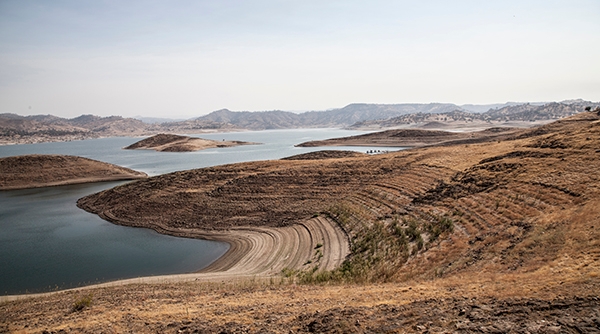
What are you working on now, and what are your plans for future projects?
I haven't truly finished Run Dry yet. There are two outstanding features. First is real-time GIS maps, which I will add to the Run Dry website. I want people to understand the relationship between climate change, water, socio-economics, agriculture, migration, and other factors. I hope that when people see this data visualized, they will understand how interlocked these factors are. Second, I promised to bring the project back to the San Joaquin Valley, where it originated. The public library system in Tulare County has agreed to house the project, show the films, and create a place for residents to provide feedback. Because of COVID-19, this project is temporarily suspended.
Educating young people about climate change is important, too. I am working across academic disciplines to create college curricula that helps students connect science to the human condition. A team of faculty from across CSU campuses in the sciences, social sciences, and humanities developed a proposal for an integrated, interdisciplinary, and experiential hydrosocial curriculum for students. Hydrosocial studies focus on how people, societies, institutions, technology, science, and geo-political interests interact synergistically to allocate, protect, and understand water's importance as a community resource. The curriculum is designed to address both social and environmental relationships we have with water in California from humanistic and scientific viewpoints, something I think is desperately needed.
